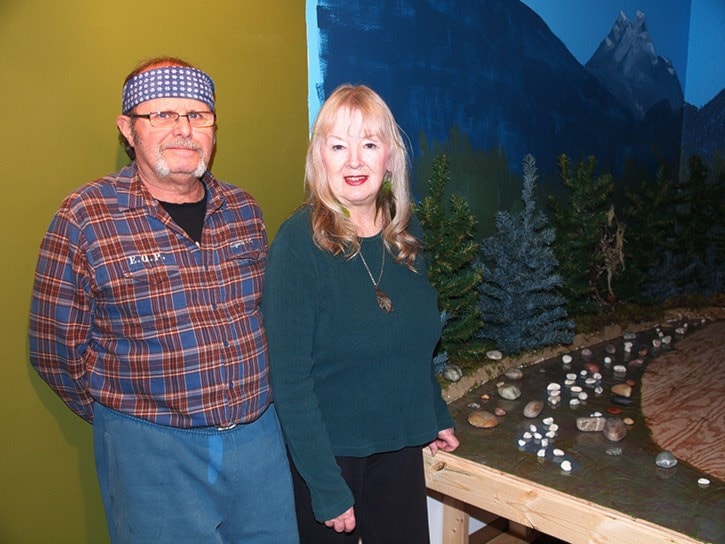The history of the Sinixt people will be given their own space at the Nakusp Museum when a new exhibit opens this spring.
The exhibit has been years in the making and is finally going forward after the museum was granted additional space thanks to the expansion of the Centennial Building.
“We have been wanting to build a big outdoor exhibit for a long time now, we just couldn’t get any other land in Nakusp,” said Sharon Montgomery, the curator of the museum and co-chair of the Nakusp & District Museum Society. “When (the expansion) happened, we thought, let’s downsize and show their habitat in miniature and move the rest of the artifacts and give them a special spot.”
The Sinixt have a history in the Nakusp area going back 10,000 years, said Montgomery, and the exhibit will shed light on how the people lived around here.
The centrepiece of the exhibit will be a large diorama of the Nakusp area. The diorama models the Nakusp shoreline from Kuskanax Creek to the east, with the mountainscape to the north of Nakusp painted on the wall.
The diorama will feature a model Sinixt village next to the Kuskanax and a winter village where Nakusp is today. The summer village will feature a tule mat teepee and a fish drying shack, while the winter village will feature a pit house.
The models are being built by Montgomery and Cliff Woffenden, the author of the book Ghost Peoples – The Sinixt: Recovering from Extinction.
The exhibition room will become the home for the museum’s Sinixt artifacts and archives. The museum’s sturgeon-nosed canoe will be moved into the room and there will also be a video about the Sinixt people narrated by Bob Campbell, the head man of the Sinixt in British Columbia.
The Sinixt, also known as the Arrow Lakes Band, have lived in the West Kootenays for about 10,000 years, with settlements along the Columbia River from Mica in the north to eastern Washington state in the south.
In the United States, the Sinixt were forced on the Colville Reservation, and in Canada, they were declared extinct in 1956. This declaration has been contested by surviving Sinixt and they have continued a legal battle to have their status and rights recognized by the Canadian government.
According to Montgomery, a few hundred Sinixt lived in permanent settlements in the Nakusp area. “They had a large village in Nakusp and they had another large village at Kuskanax creek, which is what we’re duplicating,” she said. “They had villages all up and down the Arrow Lakes.”
The Sinixt would have summer camps they would use once every five years in order not to deplete the area’s fish and game; and a winter camp that consisted of pit houses dug into the ground.
The exhibit is being funded through the museum’s own fundraising activities. They held an annual garage sale to raise about $6,000 for the exhibit, though it could end up costing less than that.
The museum has always had displays about the Sinixt and the new exhibit will result in some of the museums other displays being moved around.
The exhibit is schedule to open in time for the May long weekend, first with an opening for local business and hotel owners, and then for the public over the summer.
